Investors will be returning from a holiday-shortened week, and no doubt, all the focus and attention will be on trade policies.
The economic calendar is pretty light, but we’ll get some
housing data
to close the week.
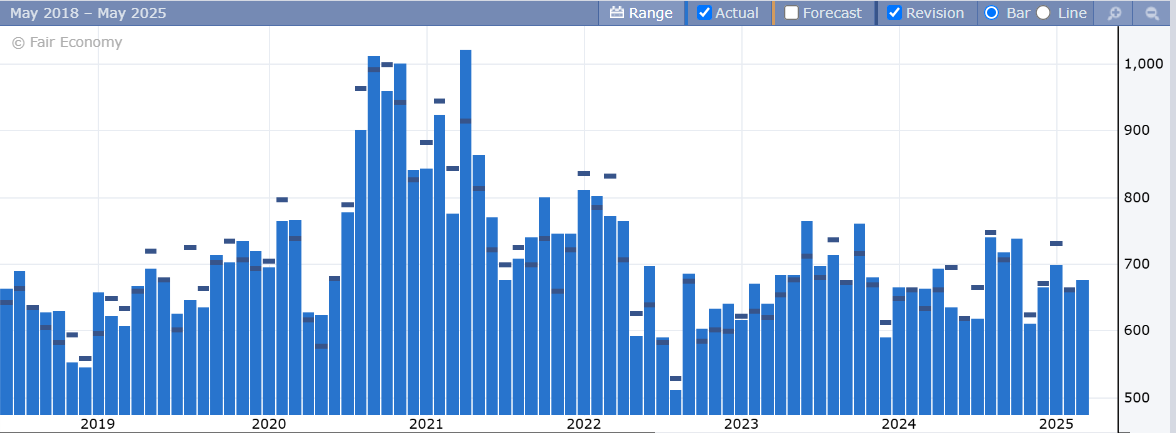
Wednesday: New Home Sales (+680K expected)
Housing has been in a slump for years, and the expectations are for that to remain the same. Prices have held pretty solid because of the lack of inventory/supply. But sales activity has slumped because of the rise in rates, making buying less affordable and no incentives for sellers to move and refinance at a higher rate.
Thursday: Durable goods (+1.5% expected) and Weekly Unemployment Claims
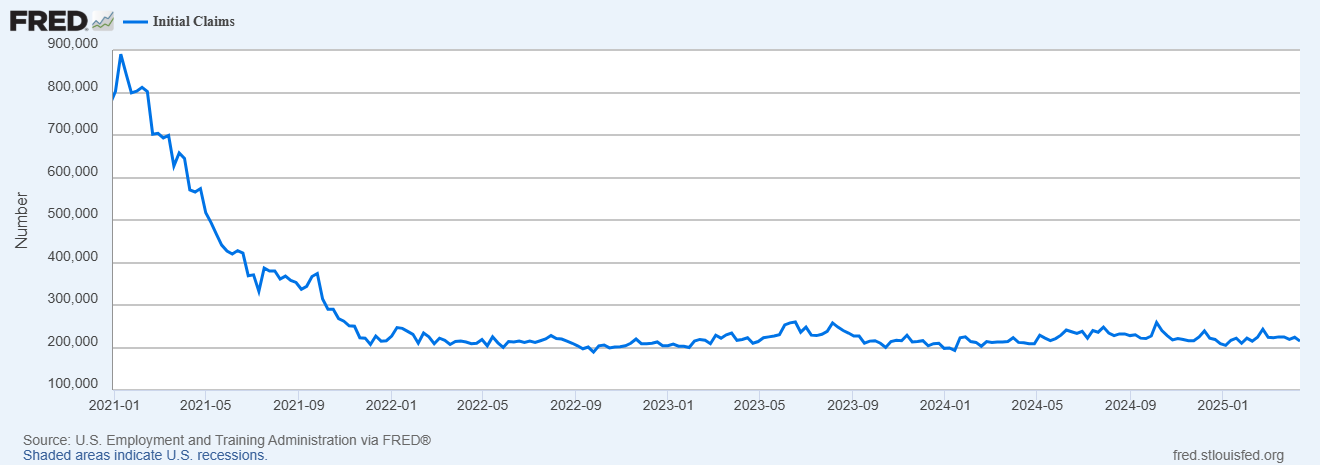
Still waiting for the job cuts to show up in the data. Weekly unemployment claims remain well below average, and aren’t budging.
Friday: Revised Consumer Sentiment and Inflation Expectations (50.8 expected)
Sentiment has fallen off a cliff and inflation expectations are above the levels of the post-COVID spike. Not a good combination. Regardless of how ridiculous it is for sentiment to be this poor, consumers still make decisions based on how they feel. The street isn’t expecting much of a difference from the initial estimates two weeks ago.
Earnings
We are now entering the heart of earnings season, we’ll begin to get an idea on how badly earnings could be effected by the uncertainty.
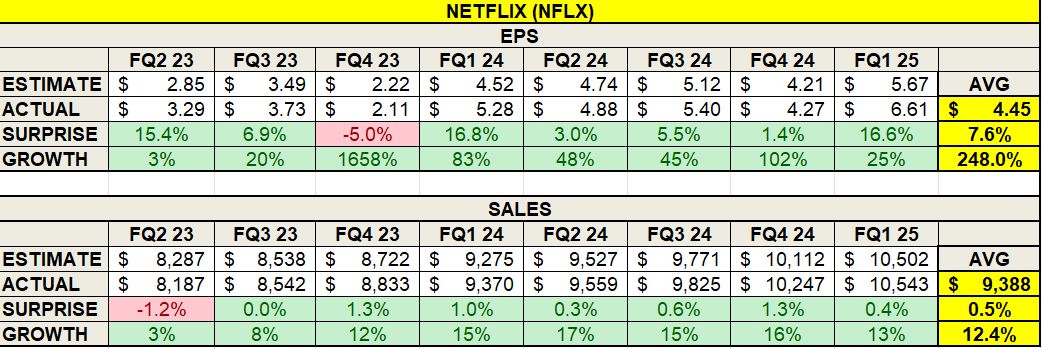
On Thursday, Netflix (NASDAQ:
NFLX
) crushed earnings estimates by almost 17%, one of the biggest earnings beats for the stock in years. While also beating sales estimates for the 6th straight quarter.
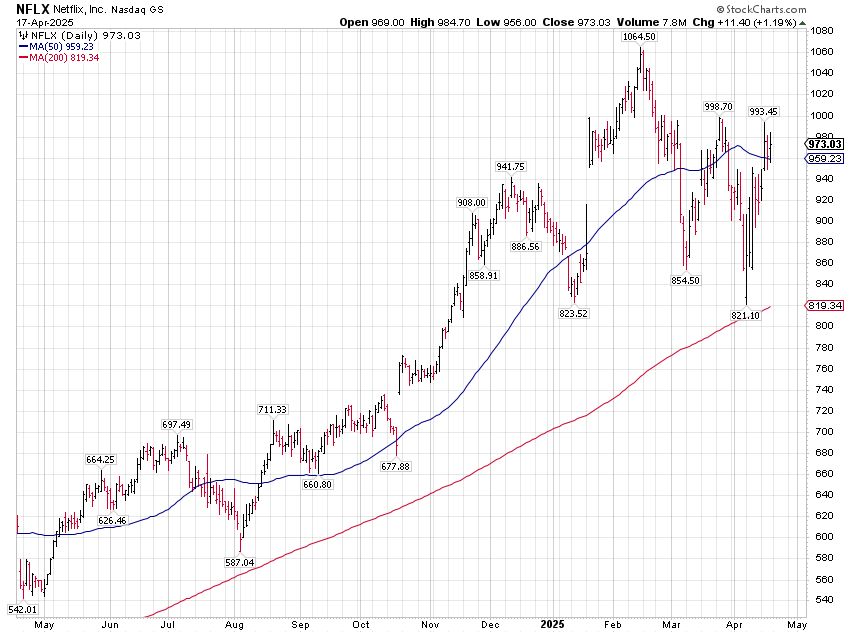
Arguably the best stock in the market right now, Netflix is one of the few tech stocks that is trading ABOVE its liberation day price levels. Only about 20% of
S&P 500
stocks are currently trading above their 50-day moving average, and Netflix is one of them.
Earnings grew 25%, while sales grew 13%.
The street expects about 23% EPS growth and 13.5% sales growth over the next 4 quarters.
Including the after-hours gap higher, the forward PE is approximately 39x. Which isn’t cheap but not that much higher than the 5-year average (35x). And at a PEG ratio of 1.68, it’s still cheaper than the mag 7 stocks minus Nvidia (NASDAQ:
NVDA
) & Google (NASDAQ:
GOOGL
).
I hear people calling it a consumer defensive company, and I totally agree. In fact, it might even do better in an economic slowdown because more people will be home longer due to delayed trips and other outings.
I’m always a bit nervous when everyone seems to get bullish on a stock or asset class, since that is one of the first signs that a trade could be overcrowded (at least in the short term). But there isn’t much not to like about Netflix these days.
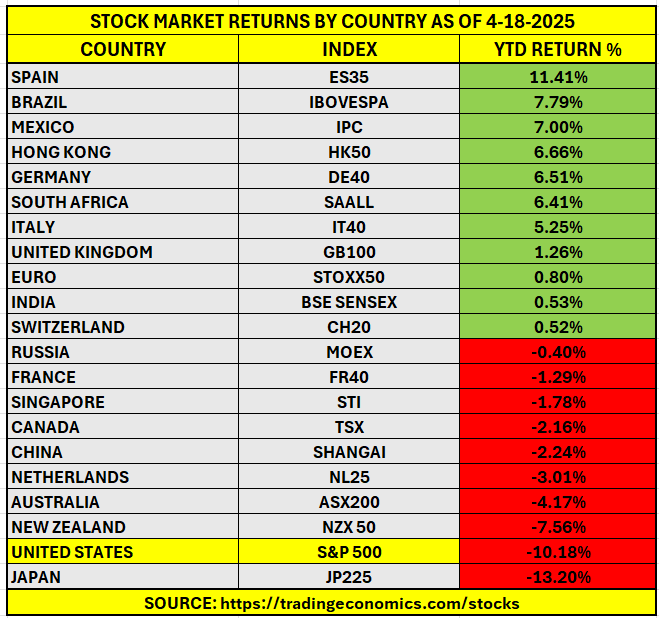
The S&P 500 is down 10% this year, while the US dollar is down, and rates are higher (which means bonds are being sold down). So, where is the money going?
The answer is; almost everywhere but here. Of the 20 biggest global equity markets in the world so far this year, the US is the 2nd worst performing, while most are still trading higher or right around break even. It’s still a ways to go before the end of the year, a lot could change by then. But it’s been a long time since we saw something like this.
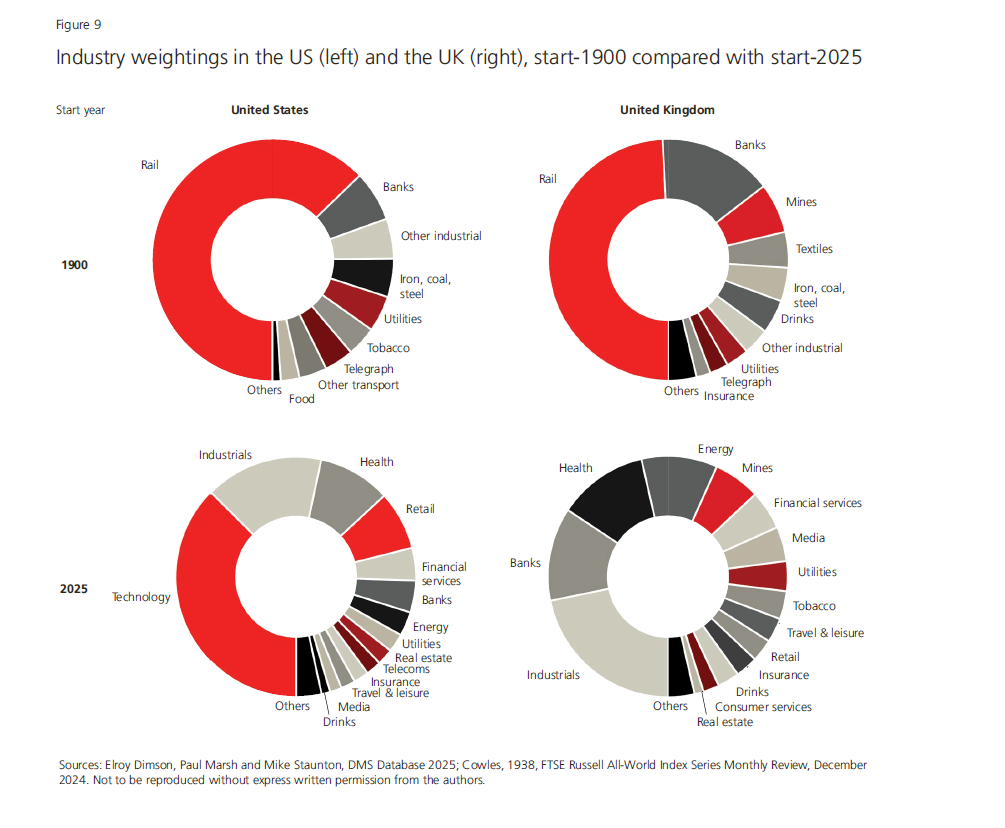
UBS does a great global investment returns yearbook. A lot of good historical charts and data. The above chart is one I found most interesting. Back in the early 1900’s railroads made up over 60% of the US equity market! While tech, finance, and health care were almost nonexistent. Fast forward to today, and it’s all about tech.
A lot is made of techs’ weighting in the S&P 500 being as high as it was at the height of the dot-com bubble. But I think this is more to do with the evolution of our economy over time, than anything nefarious to come. Especially, when you consider that tech’s % of earnings to the index is far better than it was back then.
No matter the case, it still pales in comparison to the 60%+ weighting of railroads back in the old days.
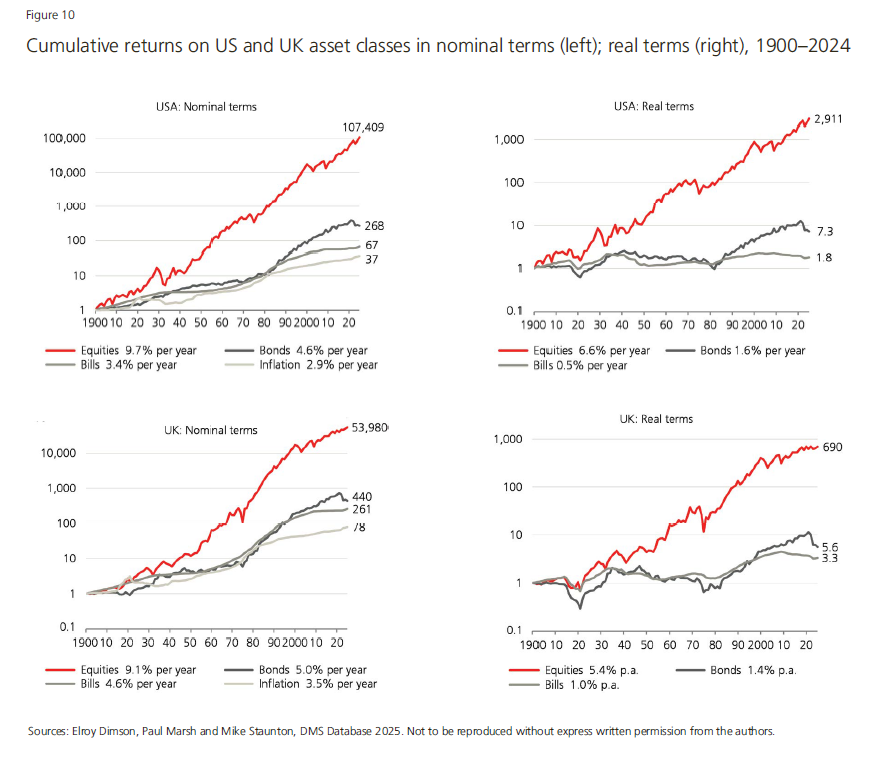
Since 1900, US stocks have returned 9.7% per year and 6.6% per year when adjusted for inflation. While US bonds have returned 4.6%, but only 1.6% net of inflation.
Most of us already now this. But take a look at the UK financial asset returns during that same time period. 9.1% stock returns (5.4% when adjusted for inflation), while bonds produced about the same returns as their US counterparts.
Why do I bring this up? Because until 1920 (or 1944 depending on what source you use), it was Britain that held the reserve currency status. They lost it to the US dollar, but as you can see. It wasn’t the end of the world for them.
I’m not saying this wouldn’t be a serious problem. And we should do everything we can to avoid such an outcome. But it doesn’t mean it has to be financial Armageddon either.

